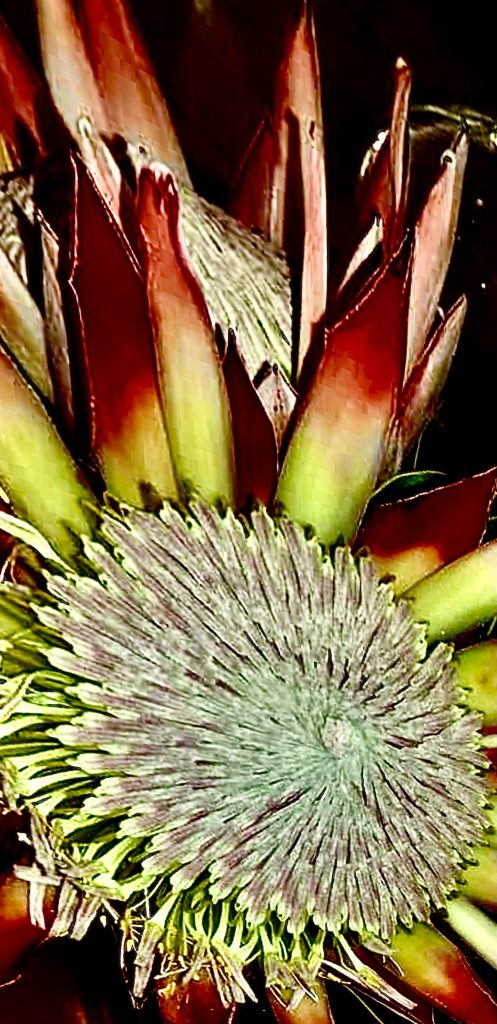HÉLÈNE BLIGNAUT

HÉLÈNE BLIGNAUT (photo on the left), anthropologist of the Languages, lecturer of Masters in several universities in the world, writer of novels and essays, a true South African, takes us on a journey into the immensity of her land which she documents in novels, conferences and photographic reportages: an extraordinary multiple scenario between the generosity of nature, the forests and two oceans, the wild life in the savannahs, ancient traditions, craftsmanship, fashion, life styles.
Your history, your youth lived on the coasts overlooking the Indian Ocean are certainly an imprinting that you cannot ignore. What do you carry with you from South Africa today and why, despite living in Milan, do you continue to be such a credible, important ambassador of this wonderful land?
I have been South African since 1706, even if I don’t show them… and what you learn, being South African, or even if you come from outside, first of all is the great ethical value, even before the aesthetic one, of nature, because we talk about Wildlife, we talk of greenery and the majestic plant bio-diversity and we talk about the “dimensions” of nature, of the prairies, of the oceans, of the flowers: there are some flowers that are as big as a room! So I retain the sense of greatness, of power of this majestic and benevolent nature. And all this makes me want to transfer it because it’s as if I were too small for all this beauty that I contain being South African. The fact of telling it, of spreading it, is as if it allowed me to free myself a little from it.

South Africa is a place that is home to many different ethnic groups, with their cultures and traditions that coexist, albeit, not without difficulties. Don’t you think this could be a cliché also applicable to our Europe, to the Mediterranean basin, a sort of cohesion pact that surpasses the interests of sovereign states also from the point of view of tolerance, of open-mindedness towards other realities?
You have to be honest, first of all. The Rainbow Nation means many ethnic groups, many different traditions, cultures and religions together. However, there may be misunderstandings. I’m talking about recent history. I don’t want to talk about the past because we would have to open too painful chapters. I believe that the secret is that everyone has maintained the dignity, value and heritage of their own tradition. So the model to bring to Europe is yes, we are all together, but we all mutually respect the value and high definition of each other’s culture. Because, if we want to “integrate and change” it means that we have not understood what Rainbow means and, in the rainbow, all the colors are well divided, identifiable but are harmoniously together.
How many different types of women are there in South Africa? And do they also differ in their clothing?
Oh, there are many! Because there are black women, white women, coloured women of ancient ethnicity, Indian women and among other things, among black women, it is necessary to distinguish between different types who, even in modern “daily life”, still maintain tribal traditions. For example, when they call each other, the Zulus have a type of high-pitched whistle that comes from their ancestral custom of calling herds together in the villages… a wonderful thing.
What should never be missing in the suitcase of a person leaving for South Africa?
The raincoat! South Africa is five times the size of Italy. And if we talk about Italy we talk about Sicily and Alto Adige. The climates are very different. Imagine South Africa. In Cape Town, on the Atlantic Ocean, there are the Benguela currents, very cold (which bring wonderful lobsters), then at
Good Hope Cape – the Cape of Good Hope – you can see a very long strip of foam, at It is infinite, with the turquoise, warm and calm sea of the Indian Ocean and the cold and green ones of the Atlantic Ocean and the waters do not mix. So, if the climate is windy and in winter it can even snow in Cape Town, a very European climate (in fact the wine of South Africa comes from here, my French ancestors, the Huguenots in the Dutch colony, brought it to us), here it is necessary the raincoat. Then instead on the coast of KwaZulu-Natal with its main city, Durban and East London there are only two seasons: summer and summer. But every now we have
showers and sometime small hurricanes. So, pack a nice waterproof and windproof garment, also due to the temperature range, one of those beautiful garments that only Italians know how to make. In Johannesburg, which is located on a plateau at 1,000 meters above sea level, the temperature range can go from 15 degrees during the day to 5 degrees at night.
Finally, if you had to choose three adjectives to describe this complex and wonderful country?
Colorful, and let me say, not in two other words, but the way you eat in South Africa, you don’t eat anywhere else in the world. Meat, chicken and vegetable dishes from the Zulu tradition and other African ethnicities, Indian cuisine, European cuisine with ancient Dutch heritage and an exaggeration of subtropical fruit, papaya, mango, passion fruit and let’s not forget the famous wines imported by my French ancestors at the beginning of the 1700s. The harvest takes place in February, of course…
GREGORY WALLIS
Durban, KwaZulu Natal, South Africa
I have been in the fashion business for almost 53 years. I have experience from the basics of clothing production: designing, creating patterns and grading them for quality assurance. I supply many of the national chain stores in South Africa with specially designed products for women, girls, men, boys and for babies. We produce around 50,000 items per month. In my career in the clothing – textile sector, my knowledge has grown and today I am a mentor, judge, give lessons and consult for companies.

Many of my students have become successful and have their own businesses. I have traveled and travel to the United States, Europe, the United Kingdom, China and India looking for trends in fabrics, colors, fit, styling and finishing processes. But I’m always fascinated by the psychology of fashion. I have been on many talk shows on television: judge, mentor and coordinator of a reality TV show called ‘Made In Africa’. Now we are busy with the second series. South Africa is the “rainbow nation”, with many ethnic/tribal groups.
The population is approximately 60 million. There are approximately 45 million black South Africans. There are also around 5 million colored South Africans (a union of black and white), 1.5 million Indian/Asian South Africans and around 5 million whites. The population of South Africa is one of the most diverse in the world, of which approximately 52% are women. The black population is divided into 4 main ethnic groups: Nguni (Zulu, Xhosa, Ndebele and Swazi), Sotho, Shangan, Tsonga and Venda. The Zulus and Xhosa are the most numerous. The majority of whites are of Afrikaner origin, also called Boers, Dutch and French Europeans and the remainder are of British origin. Coloureds are of mixed ancestry that includes indigenous Xhoisan (Bushmen) genes combined with African slaves who were brought to South Africa from the continent. Most of them live in the Northern and Western Cape provinces, while the Indian population lives in KZN KwaZulu Natal on the coasts of the Indian Ocean. KZN has the largest number of Indians outside India. White Afrikaners are in the Gauteng and Free State provinces and English in the Western Cape, Eastern Cape and KZN. There are 11 official languages and there will be a twelfth sign language.
What do the Nguni wear? They are known for their love of colour and ornamentation, wearing Western clothing, showing off the traditional dress at celebrations and important events. Skins, beads and objects decorate the image. African fashion offers a glimpse into the continent’s cultures: from brightly colored fabrics to abstractly embroidered dresses to colorful beaded necklaces and bracelets. Because Africa is so diverse, traditional clothing differs in each area. Many West African countries have a distinct regional style of clothing that is the product of long-standing textile craftsmanship in weaving, dyeing, and printing: traditions that coexist with Western styles. There is a great contrast between rural and urban societies. Urban societies are exposed to trade and the changing world, while it takes longer for new Western trends to reach rural areas.
What do Sothos wear? Women’s long dresses and skirts in bright colors and patterns with blankets around the waist. And for special occasions a traditional Basotho dress called “seshoeshoe”, in infinite varieties of designs, models and colours. Men, a short-sleeved shirt with a colorful vest and a cape, as well as a hat decorated with feathers and beads. The Shangan, on the other hand, wear traditional and vibrant clothing, with bright shades of pink, yellow, purple, blue and green.
What do Tsonga and Venda wear? The traditional dress of married women has a goatskin apron covering the front and back. A Wenda fabric. These are narrow strips of fabric hung over a belt at the front and back. Woven grass bracelets and necklaces are worn by women for decoration. Many of the black groups have historically adopted the IsiShweshwe fabric which has a long and complex history of intercontinental trade and cultural exchange. Although its roots are linked to colonization, it is associated with missionaries and political resistance. It has its origins in the Far East and is associated with missionaries and political resistance. It was originally made from cotton and blue dye from the Indigo plant. With trade, it spread to different parts of the world: imported into the Netherlands by the Dutch East India Company, it was available at the Company’s shipping station at The Cape. The oldest origins date back to the mid-1600s. Later, simplified resist dyes were used for a fabric of small white patterns on a deep blue background. It was known in weaving in Germany and was transferred to work clothes and for fighters in peasant wars. But, later adopted by IsiXhosa women in the Eastern Cape as dress. In recent years the IsiShweshwe fabric has emerged in international fashion and worn as everyday dress across the African continent. Definitely trendy!